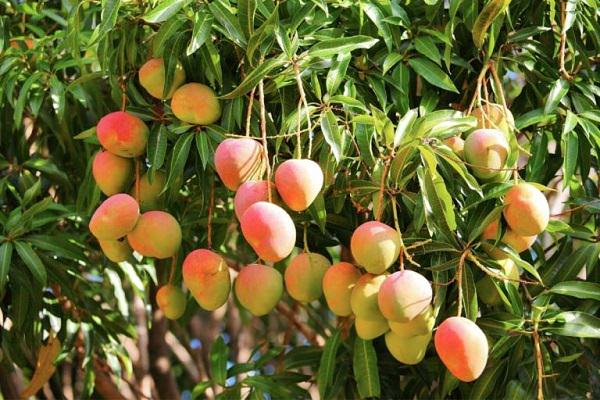 By Krishnarao Bhiku Gaunker
By Krishnarao Bhiku Gaunker
CANACONA: Goa, geographically occupies a vital position between the Arabian Sea in the west and the Western Ghats on the east. Climate and physiography of the state makes Goa a unique state. Globally, Goa is known for its sun, sand, and feni. But rarely do we identify Goa as a land of fruits and vegetables. The state of Goa is dotted with thousands of coconuts, cashew, mango and other species of trees. The identity of Goa is incomplete without its mangoes.
Mango is the choicest fruit and acquires a prominent place amongst the best fruits of the world as a result of which it is popular as King of Fruits. It is believed that the name ‘Mango’ is born from a Tamil word ‘mangkay’ or ‘man-gay’. The Portuguese traders called it ‘manga’ and in English it became ‘Mango’ comes from the Latin Mangifera Indica which belongs to family of Anacardiaceae meaning mango bearing plant from India.
Mangoes have large number of health benefits. They are rich in Vitamin A, C, B1, B2, B3, B5, B6, B9, K, and Vitamin E. Mangoes also contain proteins, fibre, sugar, carbs, and minerals such as sodium, potassium, iron, copper, calcium, magnesium, zinc, selenium, phosphorus, and manganese.
Goa is blessed to have many indigenous mangoes. Indian Council of Agricultural Research (ICAR) has recognized as many as 82 varieties of mangoes in Goa due to genetic variation. Mankurad, Malgesta, Culas, Bispo, Goa Alfonso, Mangilal, Mussarat, Fernandin, Ratnagiri Hapus, Mangilar, Amrapali, Ratna, Sindhu, Kesar,and Xavier are some of the most popular mango varieties of Goa.
The Goan mangoes are different from others in terms of their flavour, fibre, juice, pulp, taste, colour, sweetness, and size which is primarily because of the climate and soil.
The Mangoes cultivation is highly successful in coastal stretches of Devgadh, Malwan, Vengurla and Gokarn. Despite of having similar conditions, many people in Goa are reluctant to grow mangoes on commercial scale because of threats from monkeys and other predators.
The credit of spreading mangoes to different parts of Europe, Africa, and other parts of the world goes to the erstwhile Portuguese regime. The technique of grafting was first successfully introduced in Goa. Due to grafting we could succeed in many species of mangoes from extinction.
As a mango lover, I have successfully carried out many experiments on mangoes to exploit commercially. To get good yield of Mangoes, following steps can be undertaken:
1. Choose a place which receives 8 to 10 hours of direct sunlight in a day
2. Dig a pit of size 1x1x1meters. If land is rocky or lateritic surface, the size of pit may be made a little bigger.
3. Chose a best variety of graft. The graft must have intact tap root and preferably must be one year old.
4. Keep the distance between two trees around 9 meters.
5. Fill the pit with top soil containing manure green leaves, twigs, cattle dung, one kg neem cake, 2kg rock phosphate, and 50 grams carbaryl powder.
6. While filling the soil in the pit, care must be taken to keep pit porus so that oxygen will reach the roots.
7. While planting the graft soil balls does not break. The union of graft remains above the ground. Due to pressure on the plant the roots are not coiled. Allow them to grow in straight direction.
8. Mango is a rain fed crop. Irrigate the plant when required. A dose of fertilizer to be given every year as per their requirement. The exact place of giving fertilizer is the ring structure dug out below the canopy and not close to the trunk.
9. Keep cattle away from the plant for effective yield.
If mango trees are planted properly and taken care, they can be commercially exploited. ICAR-Goa has done an appreciable research on mangoes. They are open to help anybody. Today mangoes are available in any season but it is a different pleasure and experience to eat mangoes during the season. If you have not eaten mangoes then you have missed something in life.
In many religions, different parts of mango tree are used in religious rituals. Hindus regarded it as a symbol of prosperity and happiness. It also symbolises life and fertility. Similarly, mango is also holy to the Buddhists as Lord Buddha performed a miracle in Shravasti. In a king’s orchard in Shravasti, Lord Buddha ate a mango and sowed the seed from which a tree grew and blossomed quickly which is known as the Gandamba Tree, which signifies the importance of this tree. Mango is also significant for Jains in their rituals.







